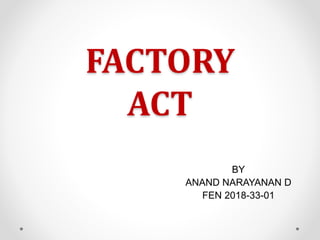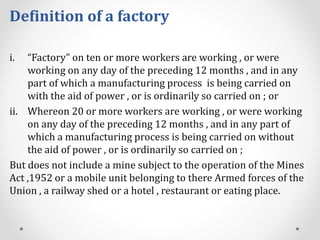The document summarizes the key provisions of the Factories Act of 1948 in India. It defines important terms like factory, worker, and manufacturing process. It outlines objectives of the Act related to regulating working hours, ensuring worker health, safety, and welfare. It discusses penalties for non-compliance. The Act applies to factories employing 10 or more workers with power or 20 workers without power. It aims to safeguard worker interests and prevent exploitation.





















